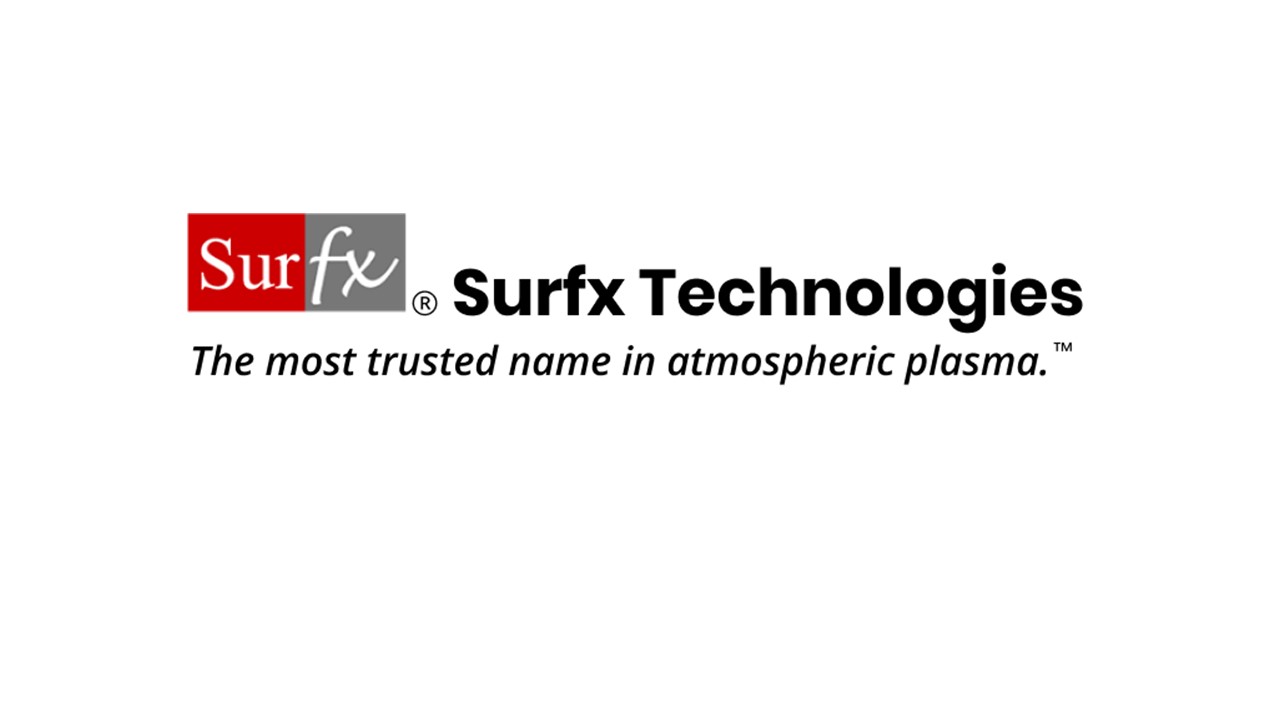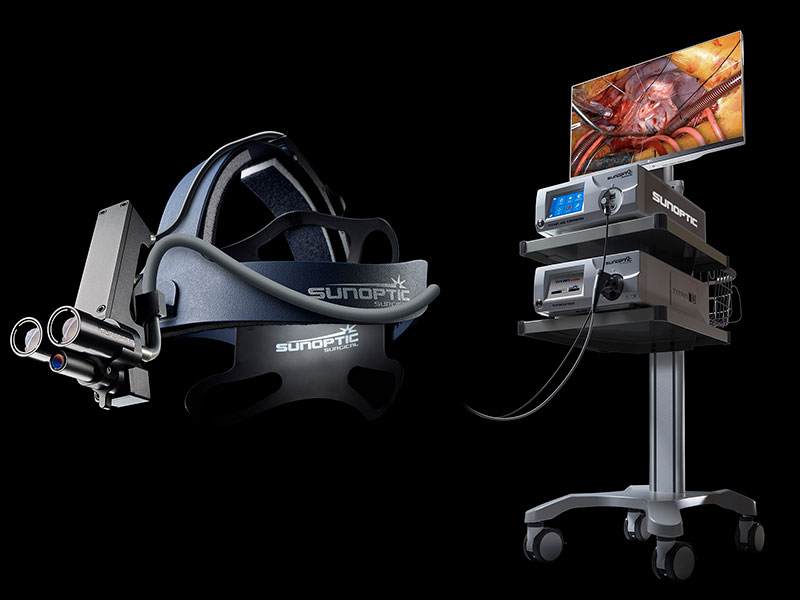Technology as a Service: Revolutionizing Business and Society
Technology as a service, or TaaS, is fundamentally reshaping how businesses operate and interact with technology. This paradigm shift, driven by the evolution of cloud computing, has transformed the traditional […]

Technology as a service, or TaaS, is fundamentally reshaping how businesses operate and interact with technology. This paradigm shift, driven by the evolution of cloud computing, has transformed the traditional model of ownership to one of on-demand access and pay-as-you-go pricing. TaaS empowers organizations to leverage cutting-edge technologies without the burden of upfront investments and complex infrastructure management, ultimately fostering agility and innovation.
From healthcare to finance, manufacturing to education, TaaS is permeating various industries, unlocking new possibilities and accelerating growth. The accessibility of advanced technologies through TaaS solutions has enabled startups and established enterprises alike to compete on a global scale, driving unprecedented levels of efficiency and productivity. This paradigm shift, however, also raises important ethical considerations, such as data privacy, security, and the potential impact on employment dynamics.
Definition and Evolution of Technology as a Service (TaaS)
Technology as a Service (TaaS) is a revolutionary paradigm shift in how businesses and individuals access and utilize technology. Unlike traditional ownership models where organizations invested heavily in acquiring and maintaining physical infrastructure, TaaS empowers them to consume technology as a service, paying only for what they use. This shift fundamentally alters the landscape of technology adoption, enabling organizations to leverage cutting-edge solutions without the complexities of ownership and management.
Evolution of TaaS, Technology as a service
The roots of TaaS can be traced back to the early days of cloud computing, which emerged as a viable alternative to traditional on-premises infrastructure. Cloud computing services like Software as a Service (SaaS), Infrastructure as a Service (IaaS), and Platform as a Service (PaaS) laid the groundwork for the TaaS model. As cloud technology matured, the concept of providing technology as a service expanded to encompass a wider range of offerings, including artificial intelligence (AI), data analytics, and Internet of Things (IoT) solutions.
Impact of TaaS on Industries
The transformative power of TaaS is evident across various industries, revolutionizing how businesses operate and deliver value.
- Healthcare: TaaS is empowering healthcare providers with advanced diagnostic tools, telemedicine platforms, and data analytics solutions, enabling them to deliver more efficient and personalized care.
- Finance: Financial institutions are leveraging TaaS for fraud detection, risk management, and personalized financial services, enhancing security and customer experience.
- Manufacturing: TaaS is driving innovation in manufacturing by providing access to advanced robotics, predictive maintenance, and supply chain optimization solutions, leading to increased efficiency and productivity.
Key Characteristics of TaaS
Technology as a Service (TaaS) is a revolutionary approach to technology consumption, shifting from traditional ownership models to a subscription-based service. This paradigm offers distinct characteristics that define its unique nature and impact on businesses and individuals alike.
On-Demand Access and Pay-As-You-Go Pricing
The core principle of TaaS revolves around providing on-demand access to technology resources. Users can access and utilize the required services without needing to invest in upfront infrastructure or software licenses. This on-demand accessibility aligns seamlessly with pay-as-you-go pricing models, where users pay only for the services they consume. This flexible pricing structure eliminates the need for substantial upfront investments and ensures that users pay only for the value they derive.
Scalability and Flexibility
TaaS solutions are designed to scale effortlessly to meet fluctuating demands. Businesses can easily adjust their technology resources to accommodate growth or seasonal changes, ensuring optimal performance without the limitations of fixed infrastructure. This scalability empowers organizations to adapt quickly to evolving market conditions and seize new opportunities.
Managed Infrastructure, Software, and Updates
Technology providers assume the responsibility for managing the underlying infrastructure, software, and updates associated with TaaS solutions. This frees users from the burden of managing complex IT systems, allowing them to focus on their core business operations. Providers handle all aspects of infrastructure maintenance, software upgrades, and security updates, ensuring a seamless and reliable service experience.
Benefits of TaaS
TaaS offers a range of benefits that contribute to enhanced efficiency, agility, and cost-effectiveness.
Reduced Upfront Costs
The pay-as-you-go pricing model of TaaS eliminates the need for substantial upfront investments in hardware, software, and IT infrastructure. This significantly reduces capital expenditures and frees up financial resources for other strategic initiatives.
Increased Agility
TaaS solutions enable businesses to adapt quickly to changing market conditions and emerging technologies. The ability to scale resources on demand and access cutting-edge technologies allows organizations to remain agile and competitive in a rapidly evolving landscape.
Access to Advanced Technologies
TaaS provides access to advanced technologies that might be cost-prohibitive for individual businesses to acquire and maintain. This includes cloud computing, artificial intelligence (AI), and Internet of Things (IoT) solutions, empowering organizations to leverage cutting-edge capabilities without significant capital investments.
Types of TaaS Solutions

Technology as a Service (TaaS) encompasses a wide range of solutions that cater to diverse business needs. TaaS providers offer various services, from software and hardware to data and infrastructure, all delivered through a subscription-based model. These solutions enable organizations to access and leverage cutting-edge technologies without significant upfront investments, allowing them to focus on their core competencies.
Categorization of TaaS Solutions
TaaS solutions can be categorized based on the type of technology they offer. Here’s a table highlighting different categories of TaaS:
| Category | Description | Examples |
|---|---|---|
| Software as a Service (SaaS) | Provides access to software applications over the internet. Users can access and utilize the software from any device with an internet connection. | Salesforce, Microsoft Office 365, Dropbox, Zoom, Slack |
| Infrastructure as a Service (IaaS) | Offers access to computing resources, such as servers, storage, and networking, through a cloud-based platform. Users can provision and manage these resources as needed. | Amazon Web Services (AWS), Microsoft Azure, Google Cloud Platform (GCP) |
| Platform as a Service (PaaS) | Provides a platform for developing, testing, and deploying applications. Users can access a suite of tools and services to build and manage their applications. | Heroku, Google App Engine, AWS Elastic Beanstalk |
| Data as a Service (DaaS) | Provides access to data sets and analytics tools. Users can leverage these data sets to gain insights and make informed decisions. | Google BigQuery, Snowflake, Amazon Redshift |
| Security as a Service (SecaaS) | Offers security solutions, such as firewalls, intrusion detection systems, and data encryption, through a cloud-based platform. | CrowdStrike, Zscaler, Fortinet |
| DevOps as a Service (DaaS) | Provides tools and services for automating software development and deployment processes. Users can streamline their DevOps workflows and improve efficiency. | GitHub, GitLab, Jenkins |
| Artificial Intelligence as a Service (AIaaS) | Offers access to AI models and algorithms. Users can leverage these models to build AI-powered applications or automate tasks. | Google Cloud AI Platform, Amazon SageMaker, Microsoft Azure Machine Learning |
| Internet of Things as a Service (IoTaaS) | Provides a platform for connecting and managing IoT devices. Users can collect and analyze data from their devices to optimize operations and gain insights. | AWS IoT, Microsoft Azure IoT Hub, Google Cloud IoT Core |
Popular TaaS Platforms
Numerous TaaS platforms are available, catering to various industries and functions. Here are some popular platforms categorized by industry or function:
SaaS Platforms
- Salesforce: A leading CRM platform, offering sales, marketing, and customer service solutions.
- Microsoft Office 365: A suite of productivity applications, including email, word processing, and spreadsheets.
- Dropbox: A cloud storage and file-sharing service.
- Zoom: A video conferencing and web conferencing platform.
- Slack: A team communication and collaboration platform.
IaaS Platforms
- Amazon Web Services (AWS): A comprehensive cloud computing platform offering a wide range of services.
- Microsoft Azure: A cloud platform providing computing, storage, networking, and other services.
- Google Cloud Platform (GCP): A cloud platform offering a range of services, including compute, storage, and data analytics.
PaaS Platforms
- Heroku: A cloud platform for building and deploying web applications.
- Google App Engine: A platform for developing and deploying web applications on Google’s infrastructure.
- AWS Elastic Beanstalk: A platform for deploying and managing web applications on AWS.
DaaS Platforms
- Google BigQuery: A data warehousing and analytics service.
- Snowflake: A cloud-based data warehouse service.
- Amazon Redshift: A fully managed data warehouse service.
SecaaS Platforms
- CrowdStrike: An endpoint security platform.
- Zscaler: A cloud security platform.
- Fortinet: A network security platform.
DevOps as a Service Platforms
- GitHub: A platform for hosting and managing code repositories.
- GitLab: A platform for software development and DevOps.
- Jenkins: An open-source automation server.
AIaaS Platforms
- Google Cloud AI Platform: A platform for building and deploying AI models.
- Amazon SageMaker: A fully managed machine learning service.
- Microsoft Azure Machine Learning: A platform for building and deploying machine learning models.
IoTaaS Platforms
- AWS IoT: A platform for connecting and managing IoT devices.
- Microsoft Azure IoT Hub: A platform for managing and connecting IoT devices.
- Google Cloud IoT Core: A platform for connecting and managing IoT devices.
Advantages and Disadvantages of TaaS Categories
Each TaaS category offers unique advantages and disadvantages. Understanding these aspects can help organizations choose the most suitable solutions for their needs.
Advantages of TaaS
- Cost-Effectiveness: TaaS solutions typically involve a subscription-based model, eliminating the need for significant upfront investments in hardware, software, or infrastructure.
- Scalability: TaaS providers offer flexible scaling options, allowing organizations to adjust their resource allocation based on their needs.
- Accessibility: TaaS solutions are accessible from anywhere with an internet connection, enabling remote work and collaboration.
- Innovation: TaaS providers continuously update their solutions with the latest advancements, providing users with access to cutting-edge technologies.
- Reduced Maintenance: TaaS providers handle the maintenance and updates of their solutions, freeing organizations from managing infrastructure and software updates.
Disadvantages of TaaS
- Vendor Lock-In: Organizations may become dependent on a specific TaaS provider, potentially limiting their flexibility to switch providers.
- Security Concerns: Data security and privacy are critical concerns when relying on third-party providers for data storage and processing.
- Internet Dependency: TaaS solutions rely on internet connectivity, which can pose challenges in areas with limited or unreliable internet access.
- Limited Customization: TaaS solutions may offer limited customization options, restricting organizations from tailoring solutions to their specific needs.
Implementing TaaS Solutions
Implementing a TaaS solution requires a strategic approach, involving careful planning, assessment, and execution. This process ensures successful integration and maximizes the benefits of TaaS for your organization.
Steps Involved in Implementing TaaS Solutions
The implementation of a TaaS solution follows a structured process, encompassing several key steps:
- Assessment and Needs Analysis: The initial step involves a thorough assessment of your business needs and identifying specific areas where TaaS can provide value. This assessment should consider factors such as existing IT infrastructure, business processes, and potential challenges.
- Vendor Selection: Choosing the right TaaS provider is crucial for successful implementation. This selection process involves evaluating potential providers based on factors such as their experience, service offerings, pricing models, and customer support.
- Contract Negotiation and Service Level Agreements (SLAs): Once a provider is selected, it is essential to negotiate a comprehensive contract that Artikels the scope of services, pricing, performance metrics, and other critical terms.
- Integration and Deployment: The integration process involves connecting the TaaS solution with your existing systems and workflows. This step may require adjustments to your existing IT infrastructure and processes.
- Training and Support: Providing adequate training to your employees on using the TaaS solution is essential for smooth adoption and optimal utilization. Ongoing support from the provider is also critical for addressing any issues or questions that may arise.
- Monitoring and Optimization: Regular monitoring of the TaaS solution’s performance and utilization is vital to ensure it meets your business needs. This includes tracking key metrics, identifying areas for improvement, and making necessary adjustments.
Factors to Consider When Selecting a TaaS Provider
Selecting the right TaaS provider is crucial for the success of your implementation. Here are some key factors to consider:
- Service Offerings: Evaluate the provider’s service offerings to ensure they align with your specific needs and requirements.
- Experience and Expertise: Look for a provider with a proven track record in delivering TaaS solutions and expertise in your industry.
- Pricing Models: Compare different pricing models and choose one that best fits your budget and usage patterns.
- Security and Compliance: Ensure the provider adheres to industry best practices for data security and compliance with relevant regulations.
- Customer Support: Evaluate the provider’s customer support channels and response times to ensure they can provide timely assistance when needed.
- Scalability and Flexibility: Choose a provider that offers scalable solutions and can adapt to your evolving business needs.
Integration Process of TaaS into Existing Business Operations
The integration process of TaaS into existing business operations can be visualized using a flowchart, which illustrates the steps involved in connecting the TaaS solution with your existing systems and workflows.
Technology as a Service (TaaS) has become a popular model for businesses, allowing them to access and utilize cutting-edge technology without the burden of ownership and maintenance. This model is particularly beneficial for companies that need to adapt quickly to changing market conditions, and it allows them to focus on their core competencies.
However, as technology evolves at an accelerated pace, businesses must be mindful of the “technology tail,” a term referring to the legacy systems and applications that can hinder agility and innovation. TaaS can help mitigate this risk by providing access to the latest technologies, ensuring businesses remain competitive and adaptable in the ever-changing technological landscape.
Flowchart:
Step 1: Assessment and Needs Analysis
Step 2: Vendor Selection
Step 3: Contract Negotiation and SLA
Step 4: Integration and Deployment
Step 5: Training and Support
Step 6: Monitoring and Optimization
Impact of TaaS on Businesses and Society
Technology as a Service (TaaS) is poised to significantly impact business models and societal landscapes, transforming the way we work, consume, and interact with technology. By offering access to cutting-edge technology on a subscription basis, TaaS enables businesses to embrace innovation without the burden of upfront investments and ongoing maintenance. However, this transformative potential also brings ethical considerations and societal implications that require careful examination.
Impact on Business Models and Competitive Landscapes
TaaS disrupts traditional business models by shifting the focus from ownership to access. This shift empowers businesses of all sizes to leverage advanced technologies that were previously inaccessible due to cost and complexity.
- For example, a small startup can now access powerful AI algorithms through a TaaS platform, enabling them to compete with larger companies that have traditionally held a monopoly on such resources.
TaaS also fosters a more dynamic competitive landscape, where agility and adaptability become key differentiators.
- Businesses can quickly adjust their technology stack based on evolving needs, enabling them to respond to market changes and seize new opportunities more effectively.
This shift towards a more flexible and accessible technology ecosystem fosters innovation and competition, ultimately benefiting consumers and the broader economy.
Ethical Implications of TaaS
While TaaS offers numerous benefits, it also raises ethical concerns that must be addressed. Data privacy, security, and accessibility are key areas that require careful consideration.
Data Privacy and Security
The use of cloud-based platforms and shared infrastructure in TaaS models necessitates robust data privacy and security measures.
- Businesses need to ensure that their data is protected from unauthorized access, breaches, and misuse.
- TaaS providers must implement stringent security protocols and transparent data handling practices to build trust and maintain user confidence.
Furthermore, the potential for data breaches and misuse must be carefully mitigated to prevent harm to individuals and organizations.
Accessibility and Equity
TaaS has the potential to democratize access to technology, making it available to businesses and individuals who may not have had the resources to acquire it otherwise. However, it is crucial to ensure that TaaS solutions are accessible to all, regardless of their financial or technical capabilities.
- Addressing digital divides and ensuring equitable access to TaaS services is essential for fostering inclusive growth and innovation.
Societal Implications of TaaS
The widespread adoption of TaaS has far-reaching societal implications, impacting the labor market, technological advancements, and the overall structure of our economy.
Job Displacement
One of the most significant societal concerns surrounding TaaS is the potential for job displacement. As businesses automate tasks and processes through TaaS solutions, some jobs may become redundant.
- However, it is important to recognize that TaaS also creates new opportunities in areas such as data analysis, cybersecurity, and TaaS platform development.
The key is to prepare the workforce for the evolving demands of the TaaS-driven economy through education, retraining, and upskilling programs.
Technological Advancements
TaaS accelerates technological advancements by fostering a culture of experimentation and innovation. By lowering the barriers to entry for adopting new technologies, TaaS encourages businesses to explore and implement cutting-edge solutions.
- This rapid pace of innovation can lead to significant breakthroughs in various fields, such as healthcare, transportation, and energy.
However, it is crucial to ensure that these advancements are guided by ethical principles and serve the best interests of society.
Future Trends in TaaS
The world of technology is constantly evolving, and TaaS is no exception. The future of TaaS holds exciting possibilities, driven by emerging technologies and evolving trends. We will explore how these trends will shape the future of work and innovation.
Impact of AI and ML on TaaS
AI and ML are poised to significantly impact TaaS. These technologies can automate tasks, improve efficiency, and enhance user experiences. AI-powered TaaS solutions can analyze data, predict user needs, and optimize service delivery.
- For instance, AI-powered chatbots can provide 24/7 customer support, while ML algorithms can personalize TaaS offerings based on individual user preferences.
- AI and ML can also be used to develop predictive maintenance models, helping businesses anticipate and prevent potential issues with their TaaS solutions.
TaaS and the Future of Work
TaaS is transforming the way we work. As more businesses adopt TaaS solutions, the nature of work is shifting towards a more flexible and agile model.
- TaaS empowers businesses to scale their operations quickly and efficiently, without the need for large upfront investments in hardware and software.
- This agility allows businesses to adapt to changing market conditions and customer demands more effectively.
- Furthermore, TaaS can create new job opportunities in areas like service management, data analysis, and AI development.
TaaS and Innovation
TaaS is fostering innovation by providing businesses with access to cutting-edge technologies and services.
- For example, TaaS can enable small businesses to leverage advanced technologies like cloud computing and data analytics, which were previously only accessible to larger organizations.
- This democratization of technology is driving innovation and enabling businesses of all sizes to compete on a global scale.
- Moreover, TaaS encourages collaboration and knowledge sharing, as businesses can tap into the expertise of specialized service providers.
Closure
Technology as a service is more than just a technological advancement; it is a fundamental shift in the way we interact with technology. As TaaS continues to evolve, driven by emerging technologies like artificial intelligence and machine learning, its impact on businesses and society will only intensify. The ability to access and leverage cutting-edge technologies on demand will undoubtedly drive innovation, foster economic growth, and redefine the future of work. Understanding the nuances of TaaS, its benefits, and its challenges is crucial for navigating this transformative landscape and harnessing its full potential.









